You are here: Home / Off Road / How Much Slime To Put In Atv Tire?
Jonathan Holmes
How much slime to put on tires? If you have large tires on your Motorcycle, ATV, Truck, Tractor or Passenger Vehicle, use our handy Slime Calculator (Application Table) to determine exactly how much Slime to install as your tire may require more than our general application amount.
How much is ATV tire injected? In addition, the amount required to be injected in an ATV tire is up to 32 ounces of product, not only does that slime tend to build up and coat the inside of the tire, but there is concern that it also creates an uneven balance in the tire since the slime can tend to collect in certain areas of the tire.
What is the best tire sealant for an ATV? In fact, this works so well that it will last the entire life of your tire and even works on tires that you thought were unusable from dry rot. It’s a tire sealant for your ATV and the one I recommend most is TireJect Tire Sealant. Keep reading below to get my take on it or you can simply head over to Amazon to see what it is currently selling for.
What is slime tire sealant? Slime Tire sealant instantly and repeatedly repairs tread area punctures up to 1/4″ in diameter using Fibro-Seal® Technology. Use as a repair measure in Highway vehicles. How much Slime per tire?: To find out how much Slime you need in your tires, select a standard tire size below.
Table of Contents
There is no air inside your Slime bottle, just the powerful puncture preventing liquid. The liquid doesn’t expand (like a foam) when it enters your tire. Instead, as your tire rotates, the liquid coats the inside of the tire (Which is why Slime doesn’t work inside inflatables – no rotation.
in each rear and 34 oz. in each front , ULTRASEAL comes in a gallon container with a hand pump and each stroke is 2 oz. if I remember correctly FYI , Slimes Website says that after 2 years their product needs to be replaced and ULTRASEAL lasts the life of the Tire
in each front , ULTRASEAL comes in a gallon container with a hand pump and each stroke is 2 oz. if I remember correctly FYI , Slimes Website says that after 2 years their product needs to be replaced and ULTRASEAL lasts the life of the Tire
2 years
Can Slime tire sealant be added to a tire to balance it? No.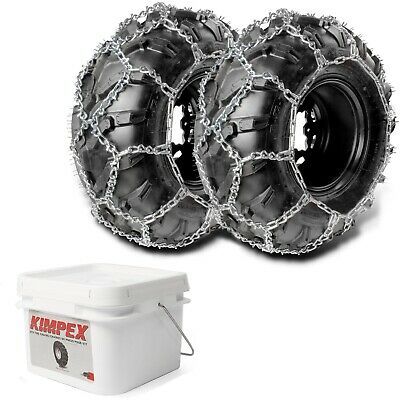 We do not recommend using Slime for this purpose.
We do not recommend using Slime for this purpose.
Tire sealant may also damage the sensors inside your tire, keeping the pressure constant and failing to alert the driver inside the car if the tire pressure was to actually become low. It’s not a permanent fix for a flat tire. Leaky tire sealant has been known to corrode wheels, which can be costly to replace.
Slime will not seal bead leaks or large punctures. If you are installing Slime to repair an existing puncture, we recommend checking the tire for puncturing objects and removing any if found. This forces the sealant to flow around the inner tube or tire allowing it to locate and repair the puncture.
– Remove the wheel from the car.
– Remove any excess air left in the tyre by putting pressure on the valve stem.
– Get rid of the corroded parts of the rim.
– With solvent appropriate for rubber, wipe the area of the tyre that touches the rim.
Will Slime damage my rims? If pre-existing damage is present, we do not recommend using Slime.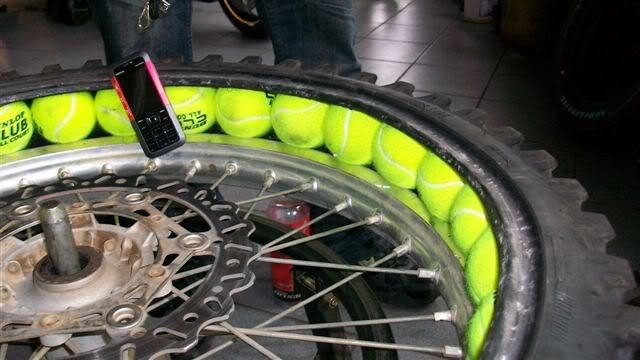 Do not leave Slime inside your tires for more than 2 years. After that time, we cannot guarantee the integrity of your rims.
Do not leave Slime inside your tires for more than 2 years. After that time, we cannot guarantee the integrity of your rims.
I have used slime in all my ATV tires for years. Works great! Once my son had a 250ex and ran into a bunch of very thick and sharp thorns. Both fronts at at least 5 holes each.
Filed Under: Off Road
Spend $10 and 15 minutes in your garage and save hours repairing and patching flats. Slime Tire Sealant is a lifesaver.
RATING: Exceptional
MSRP: $10
BEST FOR: Everyone! Spend $10 and 15 minutes in your garage and save hours repairing and patching flats.
View on Amazon
PROS:
CONS:
Flat tires are a pain. Not only are they frustrating for kids and parents, they often sideline a bike for weeks. Fortunately, preventing flats is as simple as spending $8 at Walmart (or $10 on Amazon) and 15 minutes in the garage. Tire sealants is essentially a fiber-filled “slime” that coats the inside of a bike tube to quickly and efficiently repair and prevents flats. In most cases, Slime only needs to be added to a tire once and prevents flats for essentially the life of the tire or tube.
Not only are they frustrating for kids and parents, they often sideline a bike for weeks. Fortunately, preventing flats is as simple as spending $8 at Walmart (or $10 on Amazon) and 15 minutes in the garage. Tire sealants is essentially a fiber-filled “slime” that coats the inside of a bike tube to quickly and efficiently repair and prevents flats. In most cases, Slime only needs to be added to a tire once and prevents flats for essentially the life of the tire or tube.
In the four years we have been using Slime in our kid’s bike tires, we have only experienced one flat after our son rode through a field of thorny weeds. Honestly, with all the bike riding that gets done around here, I can’t imagine life without tire sealant! The most widely available brand is Slime and is sold at Walmart, Target, most automotive parts store and Amazon. You only need about 2 oz. of slime per 12″ tire, so the 8 oz. bottle sold in the bicycle section is sufficient for two bikes. If you have several bikes to seal, consider heading over to the automotive department where the Slime tends to be cheaper by the ounce.
In order to add the Slime you will need to remove all the air out of the tire, so be sure to have a bike pump nearby before you start.
The inner valve of the tire stem valve must first be removed before you can add any slime. While it sounds daunting, it is actually quite easy to remove using the included tool.
Once the valve is out, it’s time to add the Slime. You will need to add about 2 oz. to a 12″ tire (1/4 cup) and about 2.5 oz. for a 16″ tire. For larger tires a chart is given on the back of the slime container.
Once the Slime is in place, use the tool to re-insert the core. Next, inflate the tire to the correct PSI (listed on tire sidewall) and then spin the wheel to allow the Slime to evenly distribute throughout the tire.
Repeat steps with the second tire and then you are ready to ride. Slime does not require any waiting period, allowing the bike to be used right away.
Slime does not require any waiting period, allowing the bike to be used right away.
FTC Disclosure:Affiliate links are included in this review. No monetary compensation was provided for this review. The product reviewed was purchased by Two Wheeling Tots and not supplied by the manufacturer. All opinions and images are that of Two Wheeling Tots LLC. All content and images are copyrighted and should not be used or replicated in any way. View our Terms of Use.
Tire pressure affects the flotation, stability, handling and smoothness of the ATV. Therefore, it is important to adhere to the optimal parameters, which depend on the type of coating and load. What pressure is recommended for CFMOTO ATVs - we will tell in the article.
CFMOTO indicates the recommended pressure in kilopascals (kPa). 1 kPa equals 0.0098 atmospheres (atm) or 0.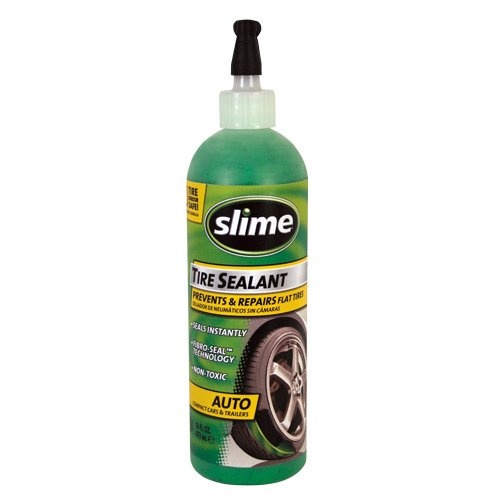 145 pounds-force per square inch (psi). It is important not to confuse these units of measurement when inflating tires.
145 pounds-force per square inch (psi). It is important not to confuse these units of measurement when inflating tires.
The recommended tire pressure for CFMOTO ATV is indicated in the instruction manual and on the vehicle itself in the area of the left rear fender.
Tires are marked with the maximum pressure they can withstand.
Low tire pressure improves off-road capability, allowing the ATV to sink less in mud, swamp, snow or sand. This is due to the fact that the contact patch of the tire with the surface increases, and the specific pressure on the ground decreases. In addition, poorly inflated tires are less “blurred” with dirt, more easily leave the rut and roll over obstacles such as trees, stumps or large stones lying on the road.
Most CFMOTO ATVs are equipped with ANCLA tires, the normal pressure of which, according to the manufacturer, is 45 kPa.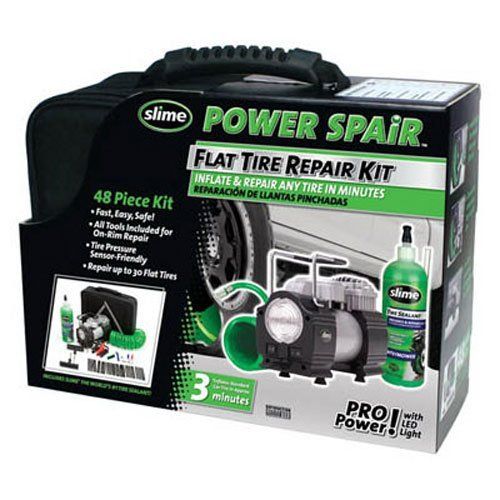 This is sufficient for off-road routes. A reasonable lower limit is up to 35 kPa. It is possible to bleed even more air only if there are beadlocks - devices that securely press the tire to the side of the disk.
This is sufficient for off-road routes. A reasonable lower limit is up to 35 kPa. It is possible to bleed even more air only if there are beadlocks - devices that securely press the tire to the side of the disk.
All-terrain vehicle tires with a car seat must have a higher pressure - from 70 kPa, the exact parameters depend on the model.
If the pressure is too low:
It is best to inflate your tires before long trips on asphalt or other hard surfaces. This will increase stability and control in corners and on a straight line - due to less deformation of the rubber. In addition, the tread will not wear out as much.
The pressure should also be increased when transporting a heavy load and a passenger.
Optimum tire pressure for a CFMOTO ATV with a motorcycle seat when driving on asphalt is 70-90 kPa.
If the pressure is too high:
It is advisable to do this before each ride - when the tire is cold. You will need a low pressure gauge to check. When using a conventional car, there will be a large error.
The recommended tire pressure for CFMOTO ATVs is 45 kPa. For all-terrain vehicles (SSV), the optimal parameters are different - more than 70 kPa. Before carrying a passenger and a heavy load or a long drive on asphalt, you can pump more.
If the pressure is too low, there is a risk of breakage, deterioration of handling and stability. If it is too high, it becomes uncomfortable to ride, all the bumps in the road are felt, the load on the suspension and steering increases.
If it is too high, it becomes uncomfortable to ride, all the bumps in the road are felt, the load on the suspension and steering increases.
A four-wheeler is an off-road vehicle by definition, which means that tires for a ATV are the most important part that ensures its flotation. Going to conquer the next track, you must be confident in your four-wheeler.
Whether racing or riding a quad over rough terrain, you can count on a safe and comfortable ride. Experienced riders know that only high-quality ATV tires can provide maximum comfort and safe handling of this exciting vehicle.
Considering the fact that the ATV was originally destined to conquer the off-road, manufacturers shoe SUVs in tires that provide confident driving on hard dirt roads. Naturally, a car on such wheels can also zip along the highway, although driving on public roads for most models is prohibited by traffic rules.
Even if you are not a professional athlete, you are unlikely to resist the temptation to conquer the viscous wetlands, or test the ATV in liquid mud to evaluate its ability to overcome impassable areas. After all, that's what you bought the SUV for. Is not it? And if so, then it is clear that ordinary quad tires are of little use for sorties into the area, replete with deep puddles filled with viscous mud. It's time to think about equipping your ATV with real mud tires.
Real mud tires, unlike standard tires, have larger lugs that can bite into loose soil or sand. The tread, in the form of a discharged Christmas tree, resembles a pattern on tractor wheels. The diameter of such tires is increased and, depending on the model, ranges from 25 to 34 inches.
The most sought after ATV tires are between 26" and 28" as they fit most ATVs without any suspension modifications. The width of the cross-country tires is slightly larger than the standard tires, and the width of the front and rear tires is different. This allows the front tires to follow their own path, while the rear tires follow a slightly different path, gripping the curb and allowing you to go a lot further.
This allows the front tires to follow their own path, while the rear tires follow a slightly different path, gripping the curb and allowing you to go a lot further.
Under normal operating conditions, the main parameter that affects the stability and handling of the ATV is the crown - the tread area in contact with the road surface. The larger the contact patch, the better the handling on firm ground. Therefore, if you are a fan of high speeds, like to maneuver and ride on rough terrain full of hard dirt roads, forest rolled roads, as well as any other hard ground, choose tires with a radial cord construction (example 1, example 2, example 3). Also, the radial design of the cord very well fulfills the bumps that can get in your way, a protruding tree root, stone or something else, the radial design will allow you to overcome this bump in the most comfortable way!
ATV wheels require softer, lighter rubber for maximum road contact and traction to confidently tackle swampy terrain.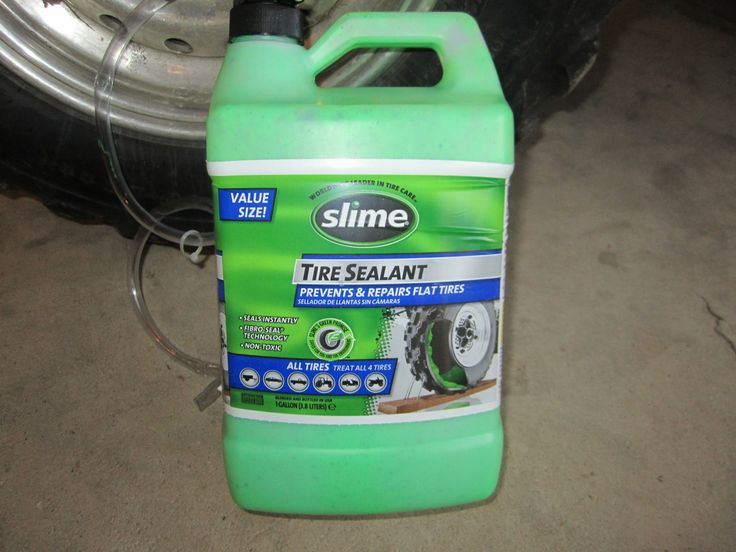 Cross-country ability is enhanced by a special tire design. An important role belongs to the lamellas, which have a peculiar shape and optimal height. The ability of the lugs to self-clean is very important, since the adhering dirt greatly complicates the patency on loose soils. Sidewall strength is also important for mud tires. Passing elastic wheels on deep ruts is associated with the risk of damage. The presence of strong sidewalls minimizes such risks.
Cross-country ability is enhanced by a special tire design. An important role belongs to the lamellas, which have a peculiar shape and optimal height. The ability of the lugs to self-clean is very important, since the adhering dirt greatly complicates the patency on loose soils. Sidewall strength is also important for mud tires. Passing elastic wheels on deep ruts is associated with the risk of damage. The presence of strong sidewalls minimizes such risks.
The diameter of the tires affects the ground clearance of the all-terrain vehicle, the increase of which increases its cross-country ability. The width of the tire changes the area of its contact with the road. Wider profiles sink less into soft and loose surfaces, helping you to move confidently through the mud.
When choosing tires for an ATV, you should proceed from the expected conditions of its operation. Ideally, tires should provide comfortable driving, both on hard dirt roads and in mud.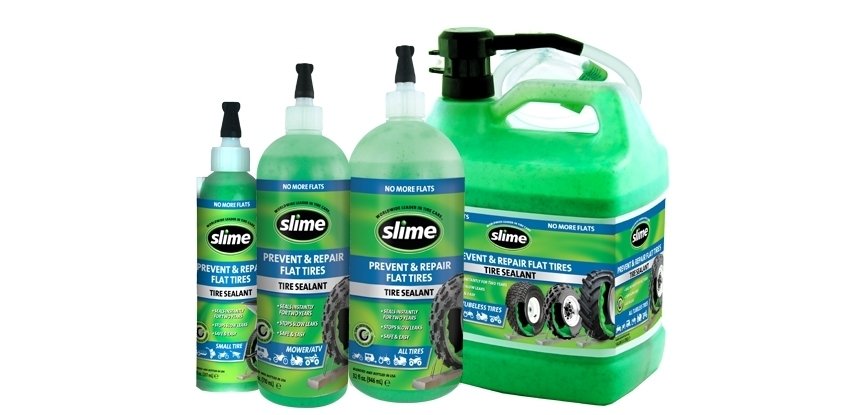 However, in practice it is impossible to achieve such results. Different manufacturers solve this difficult problem in their own way. In principle, all solutions come down to the creation of rubber optimized for use on a certain type of road: solid dirt tracks, or loose soils, mud, sand, grass. There are also all-purpose tires that provide average performance on different surfaces.
However, in practice it is impossible to achieve such results. Different manufacturers solve this difficult problem in their own way. In principle, all solutions come down to the creation of rubber optimized for use on a certain type of road: solid dirt tracks, or loose soils, mud, sand, grass. There are also all-purpose tires that provide average performance on different surfaces.
|
|
| DAKAR 2016. SERGEY KARYAKIN IN THE QUAD CATEGORY. |
The well-known American manufacturer ITP has succeeded in creating the perfect tire. It is by far the #1 tire and rim brand in its class. ITP products are known and bought by professional riders and extreme sports enthusiasts all over the world. Our well-known compatriot driver Sergey Karyakin participated in the Paris-Dakar race on tires with ITP rims. The ITP range includes the following tire types:

ITP tires are produced exclusively in the USA, which is an additional guarantee of their high quality.
The softness of ITP tires is superior to all known brands. But this indicator is very important for off-road driving. In an effort to find the best properties for different roads, ITP tire developers create tires for all conditions of use, creating new and unique treads that can cope with their tasks on any type of surface.
The main advantages of ITP tires include:
Just to add, ITP also makes excellent rims for the ATV in various sizes, including beadlock and reversible beadlocks. The discs are made of durable aluminum alloy and are lightweight and stylish. They are compatible with sport and utility models of modern ATVs.
ITP wheels are produced using an original casting technology that provides them with an enviable resistance to deformation and cracking.